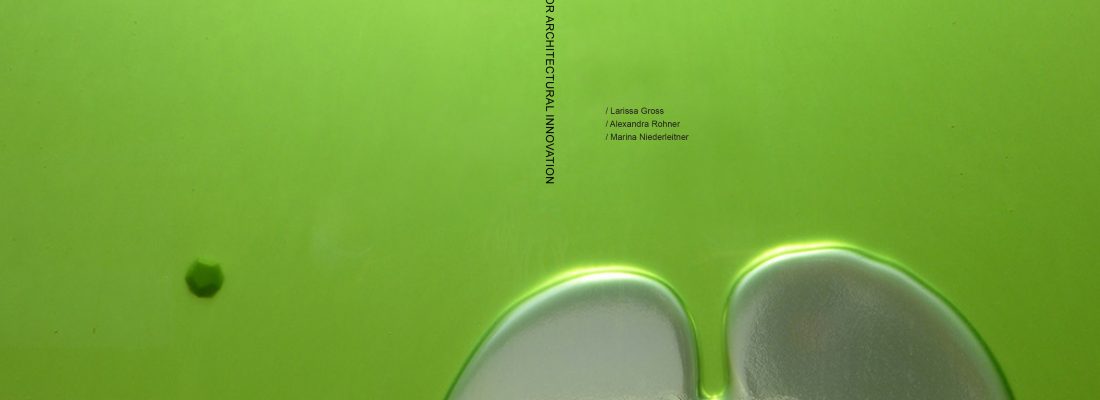
Early in our existence, we stayed very close to nature, we coexisted with nature. Time passed and humans grew in number and knowledge. Their attitudes changed to their surroundings, learning to protect themselves from weather and enemies. To restore a balanced relationship with nature and reduce the strains on natural resources we need to reintegrate science, technology and the human back into its natural environment. In a time of industrialization, technology and detachment from nature, an alternative, organic architecture, formed, more concerned about humans and their environment, more interested in natural, rational and aesthetic shapes. Buildings should grow from the ground – as one with their site – while also providing occupants with a connection to the exterior. But we weren’t just interested in the shape of nature, we wanted to look deeper into the organism, the system behind nature. Some aspects of nature are undetectable to the human eye but have been discovered by science. It has been established for example that bats can fl y in an oriented and precise fashion without optical vision because they have their own radar. Studies of this type are being carried out within the very young science of Bionics in order to apply them to human needs. The word “Bionics” derives from the Greek ios (life) and ikos (unit): a living unit. a term that refers to all artificial constructions modeled after living systems. Bionics is interested in the creation of functions and forms analogous to those of the living organism. This is achieved by means of observation and through research, analysis and synthesis. This science does not attempt to trace or copy: it works on the thesis that every model can potentially provide ideas for the design of new methods and mechanics that will improve those currently existing. An architect‘s aim in design is to shape things in such a way that they fulfill their functions perfectly. Bionics studies not only the physical and chemical aspects of a natural model but also the morphology of its structures in order to apply them to the construction of artificial devices and systems that will later be used by people. An ever-changing evolutionary process is maintained in nature so that inefficient systems disappear while those characteristics that are better able to adapt to prevalent or developing environmental conditions can be perfected. Then inspired by these models we can take advantage of this process of improvement and adapt it to our designs. Throughout history, nature has inspired humans to progress in science and technology. In the year 400 BC. Democritus., a philosopher from ancient Greece, said: “We learn important things from imitating animals. We are apprentices of the spider, imitating her in the task of weaving and confecting clothing. We learn from the swallows how to construct homes, and we learn to sing from both the lark and the swan …“ Bionics is applicable to the designs of different branches of science, inland, sea and air transportation, and elsewhere. The first cars that used an internal combustion engine looked like simple boxes on wheels. They followed the design of a stagecoach pulled by horses but used a motor instead of the horses. Designers had not yet considered the resistance of air imposed on a vehicle. In 1933 Buckminster Fuller designed a car based on a natural shape. By studying the shape of the raindrop. Fuller designed the Dymaxion automobile based on the same principles. He knew that air resistance increased in ratio to velocity squared. For example: if the car tripled its speed, air resistance would be nine times greater: the faster it went, the more the strength of the motor would be reduced as it pushed air to the sides. Fuller deduced that the shape of the car was inefficient and should be modified. He found the solution when he studied the few notes that had been written on the properties of aerodynamics which showed that when a drop of rain falls through the atmosphere, its spherical shape is modified: the front part of a rain-drop remains rounded and supports most of the fluid, while the back lateral edge is shaped by air currents. In this way, the friction of a raindrop against the air gives it the shape of a tear. This lead us to the theory of biomimicry. Biomimicry is a new approach of trying to imitate nature in a respectful way in order to reintegrate into the natural world and its ecosystem. Basically, technology has made it possible for humans to live in disharmony with nature through a border that seemed impenetrable, but the current situation – namely global warming and the climate crisis – shows that the effect of humans on earth, specifically since this complete detachment from a somewhat give and take the relationship to a position where the human seemingly doesn’t depend on nature, with all the resource depletion and pollution, is screaming for a new solution, either the extinction of humankind or a new way to think the relationship. What biomimicry offers is exactly a way to think about this new relationship. To gain back perspective on how to integrate humankind back into its very own ecosystem earth, biomimicry is proposing to take nature as an example and implement its closed-loop-circle like approach to architecture.
